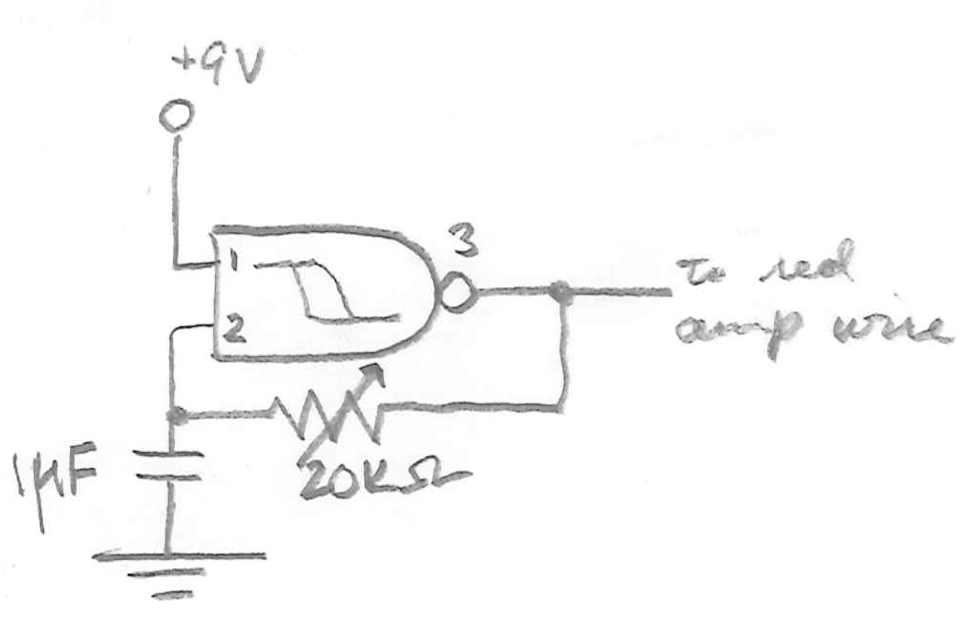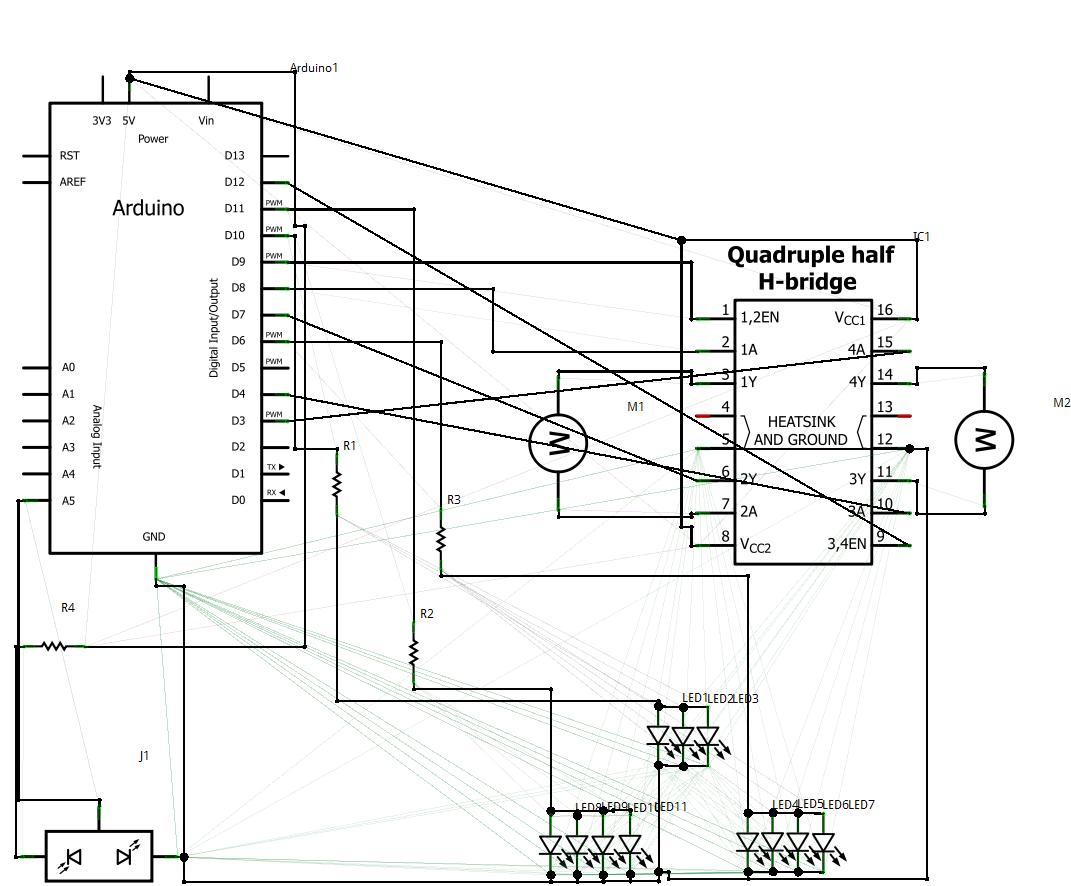
LED Zeppelin game circuit

The name of our game, LED Zeppelin, is a play on words. It comes not from the pop group of the same name but from Graf Von Zeppelin, a German who invented the first rigid air ship in 1900. The association fits perfectly. The game consists of six LEDs and an indicator LED that flashes at a rate of about 2 cycles per second. A push button is the "Operations Control" and by carefully pushing the button in synchronisation with the flashing LED, the row of LEDs will gradually light up. More: The circuit consists of a three-inverter CMOS clock-oscillator driving Q8 that flashes the LEDs on and off. The other output from the oscillator is used to charge up the 470u electrolytic C2, via R3. The output from pin 3 is in the form of a square wave.
The circuit design for the LED Zeppelin game incorporates a CMOS clock oscillator configured with three inverters to generate a square wave output. This square wave serves as the driving signal for the Q8 transistor, which functions as a switch to control the on/off state of the six main LEDs and the indicator LED. The flashing rate of approximately 2 cycles per second is determined by the frequency of the square wave generated by the oscillator.
The push button, designated as the "Operations Control," is integrated into the circuit to allow user interaction. When the button is pressed, it must be synchronized with the flashing of the indicator LED. This synchronization enables the gradual illumination of the row of six LEDs in a sequential manner, creating an engaging visual effect.
The charging of the 470µF electrolytic capacitor (C2) occurs through resistor R3, utilizing the secondary output of the oscillator. This charging mechanism is crucial for maintaining the timing and operation of the circuit, ensuring that the LEDs flash consistently. The capacitor’s discharge rate, influenced by the resistor, will affect the timing characteristics of the LED flashing sequence.
Overall, this circuit combines simple components to create an interactive LED game that leverages basic electronic principles such as oscillation, timing, and user input to produce a visually appealing and engaging experience.The name of our game, LED Zeppelin, is a play on words. It comes not from the pop group of the same name but from Graf Von Zeppelin, a German who invented the first rigid air ship in 1900. The association fits perfectly. The game consists of six LEDs and an indicator LED that flashes at a rate of about 2 cycles per second.
A push button is the "Operations Control" and by carefully pushing the button in synchronisation with the flashing LED, the row of LEDs will gradually light up. The circuit consists of a three-inverter CMOS clock-oscillator driving Q8 that flashes the LEDs on and off. The other output from the oscillator is used to charge up the 470u electrolytic C2, via R3. The output from pin 3 is in the form of a square wave 🔗 External reference
The circuit design for the LED Zeppelin game incorporates a CMOS clock oscillator configured with three inverters to generate a square wave output. This square wave serves as the driving signal for the Q8 transistor, which functions as a switch to control the on/off state of the six main LEDs and the indicator LED. The flashing rate of approximately 2 cycles per second is determined by the frequency of the square wave generated by the oscillator.
The push button, designated as the "Operations Control," is integrated into the circuit to allow user interaction. When the button is pressed, it must be synchronized with the flashing of the indicator LED. This synchronization enables the gradual illumination of the row of six LEDs in a sequential manner, creating an engaging visual effect.
The charging of the 470µF electrolytic capacitor (C2) occurs through resistor R3, utilizing the secondary output of the oscillator. This charging mechanism is crucial for maintaining the timing and operation of the circuit, ensuring that the LEDs flash consistently. The capacitor’s discharge rate, influenced by the resistor, will affect the timing characteristics of the LED flashing sequence.
Overall, this circuit combines simple components to create an interactive LED game that leverages basic electronic principles such as oscillation, timing, and user input to produce a visually appealing and engaging experience.The name of our game, LED Zeppelin, is a play on words. It comes not from the pop group of the same name but from Graf Von Zeppelin, a German who invented the first rigid air ship in 1900. The association fits perfectly. The game consists of six LEDs and an indicator LED that flashes at a rate of about 2 cycles per second.
A push button is the "Operations Control" and by carefully pushing the button in synchronisation with the flashing LED, the row of LEDs will gradually light up. The circuit consists of a three-inverter CMOS clock-oscillator driving Q8 that flashes the LEDs on and off. The other output from the oscillator is used to charge up the 470u electrolytic C2, via R3. The output from pin 3 is in the form of a square wave 🔗 External reference





